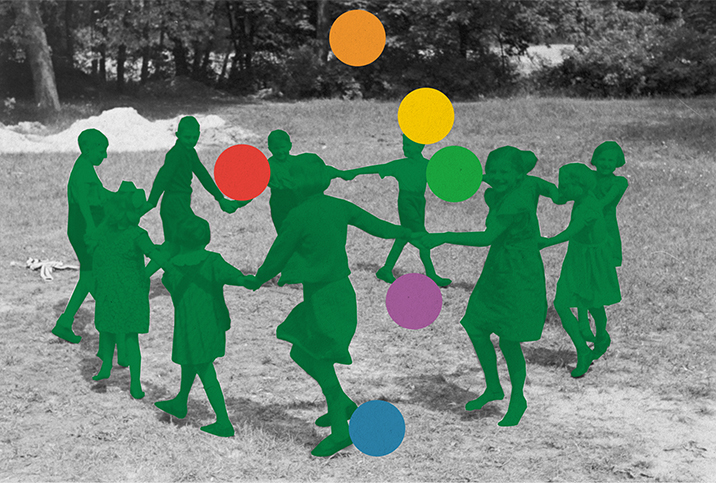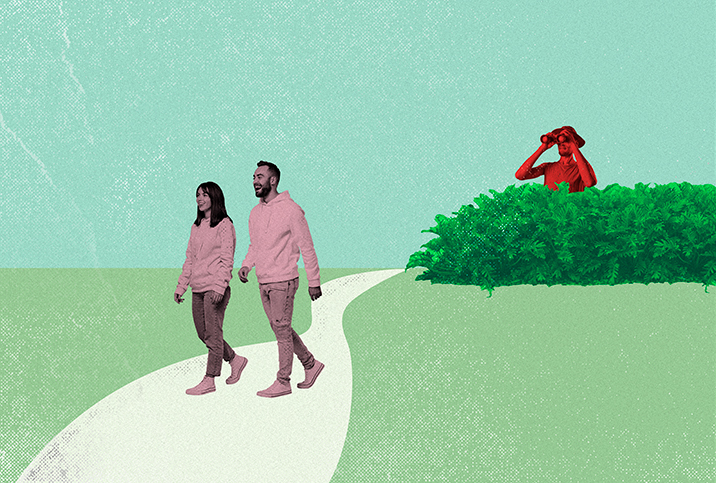Lessons We Could All Learn From Free Love Communes

Flower crowns, bare feet, Woodstock, peace signs and the age of Aquarius. These are probably some of the first images that spring to mind when you think of the hippie movement of the 1960s and '70s. But these symbols of bohemian, free-spirited living don't even begin to tell the full story.
While you may be familiar with the philosophies of love, equality and peace that underpinned the hippie movement, the details of the "free love movement" are, in many ways, still shrouded in mystery, particularly the truth about the free love communes that sprung up at the time.
The beginning of the free love movement
The origins of the free love movement date back to the 19th century. In fact, some historians even cite references to similar communes as early as the second and third centuries.
In the early 19th century, Victoria Woodhull ran for president of the United States on a free love platform, the idea being that people should be able to love freely.
"They were not 1960s hippies, they did not say everyone should be sleeping around, they were not saying people should be totally free with their sexuality," Michael Bronski, a professor at Harvard University, told Time in 2022. "They were simply saying the state had no right to dictate how people led their personal lives around romance and sexuality."
The hippie movement adopted the principles of the free love movement but adapted them. While the movement had originally been about rejecting state laws that dictated how people could conduct their relationships, by the 1960s, the free love movement had become more focused on promoting a sense of sexual freedom, whether this meant polyamory, nudism or public sex.
The rise of the free love commune
In the 1960s, numerous communes emerged with free love as the foundational philosophy. The number in the United States was probably around 2,000 to 3,000, according to Yvonne Daley, Vermont-based author of "Going Up the Country: When the Hippies, Dreamers, Freaks and Radicals Moved to Vermont."
Sex and love weren't the only focus of most free love communes. Rather, in its ideal form, the commune was meant to be a place of equality and freedom, where not only love but also concepts such as division of labor and finances were ungoverned by the state.
Every commune had its own unique guidelines and structure, but for the most part, the basic idea was the same: Members of the commune would share everything, including housework, child care, financial responsibility and, in some cases, sexual partners.
While the principles of the free love commune were arguably noble, in practice, living in one wasn't always such an idealistic experience.
"The rules and organization were often lax, leading many to fail simply because there was no governing body, not enough discipline or consequence when someone did not do their part," Daley said. "Also, for some, drugs and sex were more important than work."
Sex and the free love movement
Without clear rules and regulations, every commune interpreted the free love movement in its own way and operated by its own guidelines. This meant the sexual side of living varied widely. While some communes encouraged nudity and sleeping around, others focused more on the sharing of labor rather than the sharing of sexual partners, and the idea of consent wasn't always respected.
"Some communes like Quarry Hill [in Vermont] had 'leaders' who set the tone if not the rules. There, the founder, Irving Fiske, often 'suggested' sexual arrangements," Daley explained.
On the other hand, some communes offered a space for relationships that were often stigmatized at the time, such as same-sex or interracial relationships.
Every hippie commune is different
A few fascinating firsthand accounts of free love communes provide insight into what was really going on day to day.
One man, writing anonymously for the The Guardian English newspaper about his experiences in the 1980s at a European free love commune called simply "The Group," said: "I had sex two or three times a day. Initially, I found this traumatic; I contracted genital herpes and was regularly impotent. I grew more comfortable as I got to know the women better, but sex remained surprisingly routine, probably because love and affection were repressed in favor of expressing your 'animal' nature."
In one San Francisco free love commune called Lafayette Morehouse, which began in 1968 and is still going to this day, the "one no vote rule" is used to decide whether sexual activities can take place. If one person votes no on something, it doesn't happen.
"We think people ought to be able to do whatever they want to do as long as everyone who's involved agrees," Ilana, a commune member, told Maxim in 2018. "If me and my husband want to have an open relationship, that's up to us and it's about whether I'm in agreement with what he's going to do and vice versa."
Growing up in a free love commune
While it's one thing to join a hippie commune as an adult, it's a very different experience to grow up surrounded by the principles of free and open love.
"Teaching teens to have a more open-minded view can help them explore things more safely," said Ness Cooper, a United Kingdom-based clinical sexologist at the Sex Consultant. "Some may even feel that with a base in knowledge around sex and relationships, they don't need to just try things too soon. Instead, they might rather wait for a time when things feel right to them."
However, while this is a positive outcome of being raised in a commune, there are some negatives, too.
"Being brought up in extremely different environments with differing sex and relationship views can mean that understandings of relationship roles and expectations may not be the same as other people the individual interacts with in the future," Cooper explained. "Boundaries and language around consent may be different. As long as the individual is willing to learn another person's way of communicating these and explaining these, it should be OK."
The good and the bad of hippie communes
In the 1960s, free love communes soon got a reputation for being filled with nudity, promiscuity and polyamory. Many people saw them as sordid, lawless places—some communes were even seen as cults.
The 2018 Netflix documentary "Wild Wild Country" showcases a free love commune-turned-cult with the story of Bhagwan Shree Rajneesh, an Indian sex guru who infamously created a commune in the 1980s in Oregon that eventually ended in a mass biochemical attack against outside citizens.
These shocking stories, however, seem to be the exception rather than the rule. After all, with clear-cut guidelines, organized division of labor and stable leaders, there's no reason why free love communes can't be safe, progressive places to live.
"Growing up with an open mind about sex and relationships can be very positive and has been shown to lead to reduced teen pregnancy rates and sexually transmitted infections," Cooper said. 'It can also lead to individuals being able to express themselves better around those they are romantically involved with and communicate intimate feelings and thoughts with more clarity."
For some people, the sexual and romantic freedom that a well-run free love commune offers can be a much-needed refuge from the restrictions of mainstream society, even to this day.


















